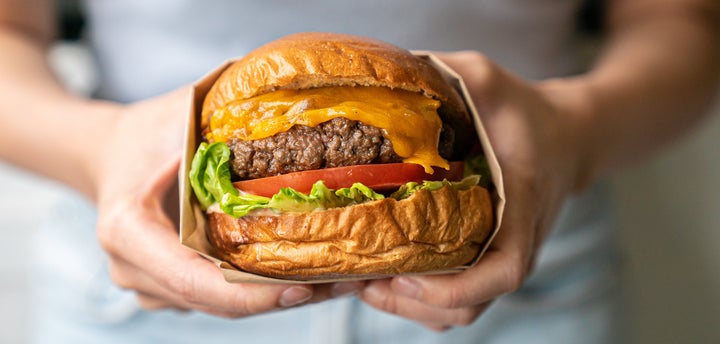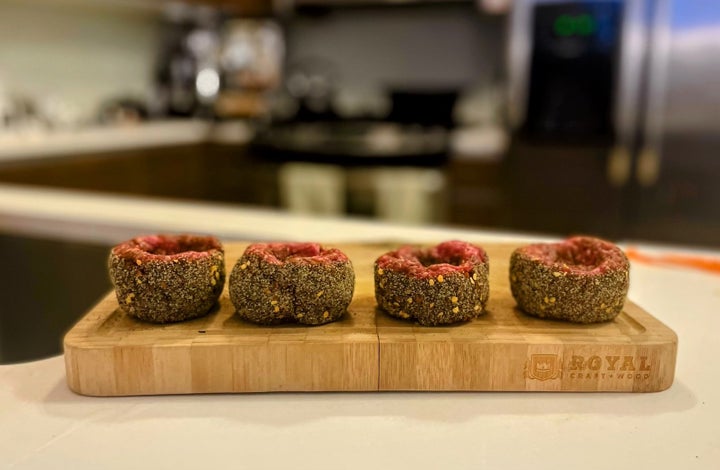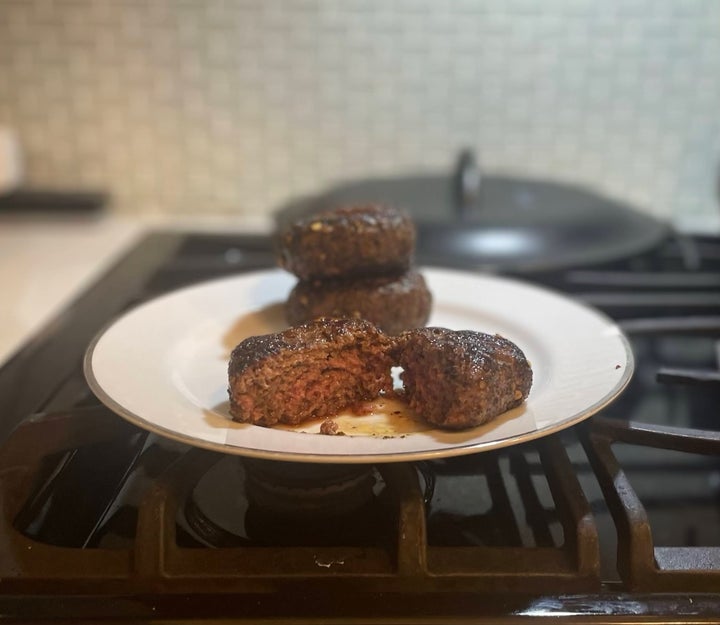
Traditionally — at least all across the United States — conversations about burgers conjure images of summer afternoons spent outdoors with a barbecue or, perhaps, casual dinner dates at diners where the food is usually drenched in sauces and squeezed between two soft pieces of bread with some lettuce, tomatoes and pickles.
Alas, I am here to propose a different vision. A burger meant to deliver the frivolity of a summer cookout alongside the heartiness that defines any sort of diner-adjacent meal. A burger that can be made at home without the use of a grill, prepared with ingredients found at just about any supermarket and sure to delight the palates of all burger aficionados.
The story of the Perry Burger — named by yours truly after its inventor, my husband Perry — begins around Nov. 18, 2018, the night Perry and I got married and officially began our awkward dance around the kitchen. Despite his acceptance of my intolerance for red meat and my understanding that Perry needs to consume a reasonable amount of protein weekly, we immediately found it difficult to come up with mutually agreed-upon dinner concoctions.
As a result, we’ve silently agreed to consume two different meals, at the same time, once a week. When I throw premade chicken burgers in the oven, Perry whips out his invisible chef’s hat and prepares his unique burgers with the sort of passion that I sometimes wish he’d exude toward any of my own culinary creations.
Given the success that his recipe has enjoyed — countless friends and family have asked me for the precise measurements — I, of course, tried it for myself and can agree that, indeed, the Perry Burger is deserving of its own moniker.
My husband’s successful gastronomic invention had me wondering if there are certain rules and tips to guarantee that a grillless, homemade burger turns out as great as its more popular grilled counterparts? Apparently, there are.
First, the recipe for the Perry Burger. And keep reading below that for some expert tips.

The Perry Burger
Yields 8 burgers
INGREDIENTS
2 pounds of ground beef
1 piece of white bread, crust removed
4 tablespoons Worcestershire sauce
1 tablespoon ground coffee beans
3 garlic cloves (minced)
2 tablespoons olive oil
Salt
Pepper
DIRECTIONS
Crust Mixture
Mix three parts black pepper, one part salt and one part minced garlic.
Set aside.
Patties
Soak bread in Worcestershire sauce and olive oil for 10 minutes.
Crush bread with a fork, add coffee and minced garlic to the mixture.
Add beef and thoroughly mix using your hands.
Make patties. Use your thumb to press in the middle of each one so they are concave.
Roll the edges of each patty in the crust mix.
Heat cast iron skillet with a drizzle of avocado oil.
Cook each patty in the skillet, about 3 minutes on each side or as desired.

The cooking pan you use makes a big difference
Fun fact: Perry has been singing the praises of cast iron pans, which are known for getting very hot. Clearly, he knows what he’s talking about, as experts say cast iron is their go-to when making burgers at home.
“I like cast irons because they are super hot,” said James Beard Award-winning chef Edouardo Jordan of JuneBaby restaurant in Seattle. “Brings a nice crust for the burger and seals in the moisture.”
Chef Joe Mosconi of Venteux in downtown Chicago takes a similar approach.
“I actually prefer not using a grill when making burgers at home,” Mosconi confessed. “I’d rather get a really nice sear using a super hot cast iron pan.”
His number one tip? Make smaller patties instead of trying to get super thick ones cooked all the way through. Smaller pieces of meat allow for even caramelization while maintaining a medium inside — especially in cast iron pans.
A little bit of fat goes a long way
“A little fat helps with the whole cooking process, to keep things moist,” Jordan said, suggesting an 80-20 ratio.
Baltimore-based chef Jasmine Norton of The Urban Burger Bar is quick to note the importance of fat as well.
“Go for the meat with the fat!,” Norton said. “I personally feel that it adds to the flavor of the burger. It’s also cheaper than lean meat.”
Stick to basics when it comes to spices
Although grabbing a variety of spices while cooking from the comfort of your own kitchen might be tempting, pros suggest keeping it simple.
“I’m a purist when it comes to my seasoning, so salt and pepper only,” Mosconi said.
Jordan admits to using brown sugar in his concoction. As for the actual seasoning process, he adds the spices internally, as he’s making the burger, and once again after the patties are prepared.
“I like the flavor all the way through,” he explained.
Invest in a meat grinder if you’re really into it
This particular tip comes courtesy of Mosconi, who suggests a grinder to get more control of what goes into the food you’re preparing — and actually saving some money along the way.
Of course, buying meat in bulk is also usually a good economy tip, mentioned by all the pros.